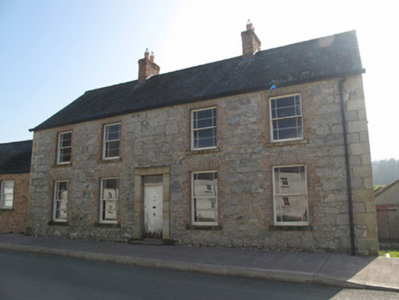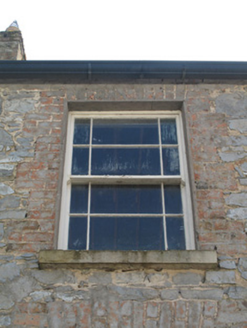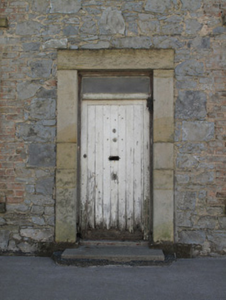Survey Data
Reg No
41400414
Rating
Regional
Categories of Special Interest
Architectural, Social
Original Use
Hotel
Date
1845 - 1855
Coordinates
270414, 346675
Date Recorded
28/03/2012
Date Updated
--/--/--
Description
Attached five-bay two-storey former lodging house, built c.1850. Not currently in use. Pitched slate roof with clay ridge tiles, two rectangular-plan red-brick chimneystacks having clay chimneypots, and replacement steel rainwater goods. Coursed rubble limestone walls having tooled block-and-start sandstone quoins. Gauged-brick square-headed window openings with red brick block-and-start surrounds, rendered reveals, masonry sills, and original side-margined two-over-two pane timber sliding sash windows. Square-headed door opening to front (north-west) having tooled sandstone surround, timber battened door and blocked rectangular over-light. Door opens onto render step. Gauged-brick square-headed door opening to rear (south-east) with timber battened door. Wall surrounding door rendered, porch to rear now absent.
Appraisal
This substantial house stands out from the rest of the complex in form and scale, having apparently functioned as the local lodging house. It retains much of its original form and character, with original timber sash windows throughout adding architectural interest. The tooled quoins and door surround to the front enliven the façade, providing a sense of contrast to the coursed rubble walls and enhancing the classically symmetrical architectural composition. The village of Mullan was built in the nineteenth century to house and serve the needs of the workers of the flax and woollen mill, and in the twentieth century, the boot factory which was subsequently established there. Mill villages such as this were constructed throughout Ulster during the eighteenth and nineteenth centuries and reflect the strong industrial capabilities of this area. Lodges within factory villages served as places of accommodation for unmarried workers, they were built in increasing numbers from the latter half of the 1800s by both charitable housing trusts and independent builders.





